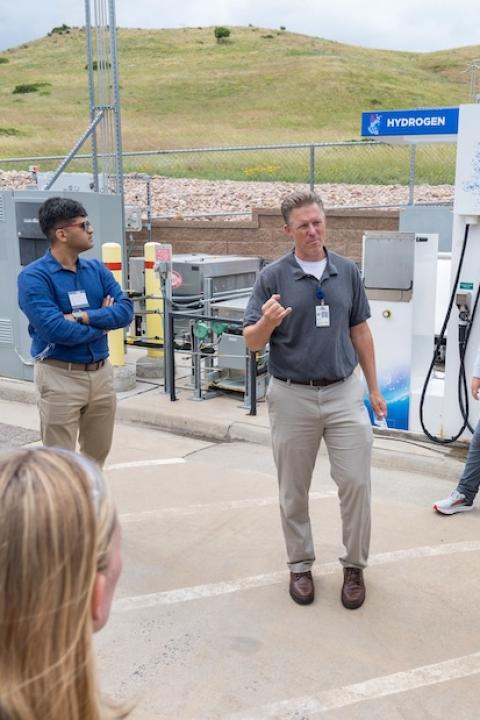
By Lee Rhodes
When I was in the hospital several years ago battling cancer, I was given a beautiful candle that soothed me, imparting hopefulness and peace of mind. The mission of my company was birthed out of that experience, and I wanted to reflect that hope and healing back to my community — and the world — by giving 10 percent of my company’s revenue back to nonprofit organizations.
Many businesses have started taking similar approaches, and philanthropy is expected to keep growing in the coming years. Small businesses and major corporations alike are making altruism a goal, going above and beyond to support charities across the globe.
Giving back can be a lot harder than it looks, though. I had people constantly telling me that our business model wouldn’t be successful, but this is a time when stubbornness pays off. Companies that give back aren’t just businesses looking to make a buck; they’re forming emotional connections. And those connections can elevate a business’s long-term sustainability.
How does a giving model benefit your business?
While opting for a giving-focused business model of course gives you the opportunity to help others, it can also help your company. There are a few ways that philanthropy can benefit your business.
It'll be a breath of fresh air for your marketing department (and budget), both of which are crucial to staying competitive. While altruism is good for its own sake, it can also boost your company's reach and prestige by building word-of-mouth rapport with nonprofits in your community without investing in marketing materials.
Plus, it builds relationships with partners and customers. These types of connections are cumulative, which means they take time to build. For example, you could go to a hospital and say, “We're going to give you $2.5 million to build a brand new unit for the children to stay in while their moms are getting chemotherapy.”
Or you could include the promise of a donation to the hospital with every product sale. Suddenly, you have word-of-mouth advertising working for you, and you’ve created a relationship with those partners and customers. On top of that, you’re still donating money to the charity you choose.
Then, once you finally have that connection, you start creating a positive reputation within your community. For the first 10 years or so, our company focused on building its reputation in Seattle, gaining a huge following simply because of our altruistic model. When companies help others, people are more likely to support them. So when you have that kind of a reputation, your community will always have your back.
Building charitable contributions into your business model
Structuring charitable donations into your business model can set you up for success. Your customers will be more inspired and connected to your company when they feel like they are making a difference in the world through your company. As you build charitable contributions into your business model, there are a few things to keep in mind:
1. Be (really) brave
Steve Jobs once said the thing that separates the successful businesses from the ones that fail is pure perseverance. Companies with a philanthropic business model face a unique set of challenges, but the key to success is to stick with it.
For example, our company didn’t turn a profit last year, but we still gave away $1.7 million because that’s our promise. Even in good years, cutting a check for someone else is tough even when you know it’s going to a good cause.
It takes a lot of guts to continue giving even when the future of your company is shaky, but that bravery will pay off once you start seeing those relationships with customers and nonprofit organizations blossom.
2. Make your story marketable
Warby Parker created a story that its customers grabbed hold of and shared with others. Its "get a pair, give a pair" idea for glasses let customers participate in its mission of changing the world one child at a time, and it also made for fantastic marketing.
Your marketing plan should be an extension of your story. When you have a solid story behind your brand that you want to share with the world, marketing becomes simply a matter of telling that story. From the time your company is born, the marketing team should be using your story and goals to propel your brand forward with your customers.
3. Change your outlook on business
Many companies give back to charity, but only after they’re profitable. They wait to see how much they have left after breaking even, then they donate a portion of that. To me, that’s not what giving back is all about.
Giving-focused business models are a different beast from traditional business models because philanthropy is part of the core business strategy. Traditional businesses are focused on making money first and giving back second. Giving-focused businesses focus on both at the same time.
Altruism can be a positive force in the business world, and by giving charitable contributions, you’re helping create an emotional connection between your customers and your company. In doing so, you will catapult your business forward and create a lifelong relationship with your customers.
Lee Rhodes founded glassybaby in 2001 after a chance meeting between a tealight and a hand-blown glass vessel during her seven-year bout with cancer. Rhodes developed the idea for glassybaby’s one-of-a-kind votives and drinkers with the core mission of helping cancer patients she met during treatment afford basic needs such as bus fare, childcare, or groceries. Ten percent of the company’s entire revenue goes toward a charitable organization; to date, glassybaby has donated more than $6 million to 350-plus nonprofits since opening its doors.
Image credit: glassybaby
TriplePundit has published articles from over 1000 contributors. If you'd like to be a guest author, please get in touch!














